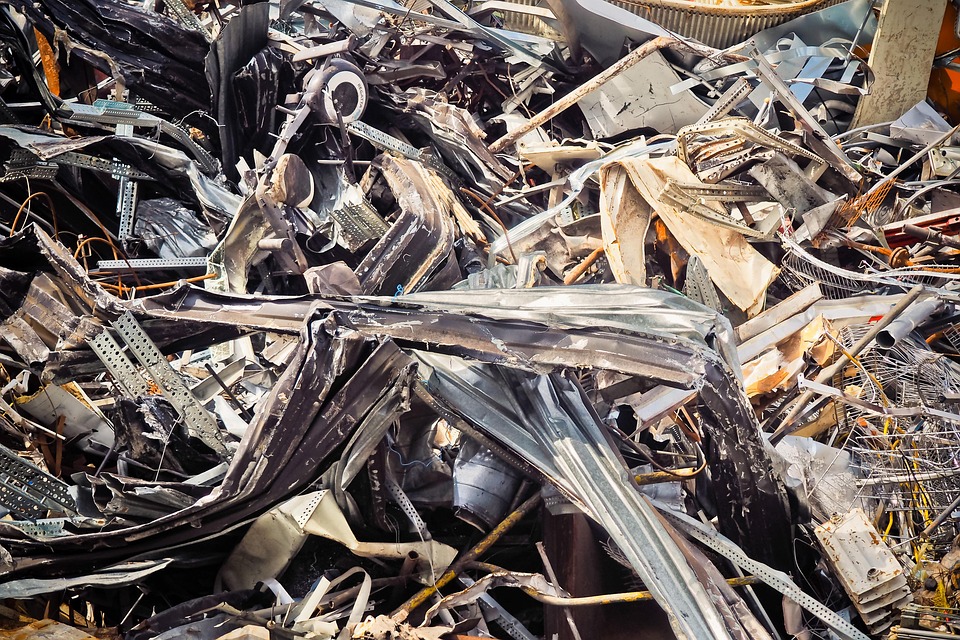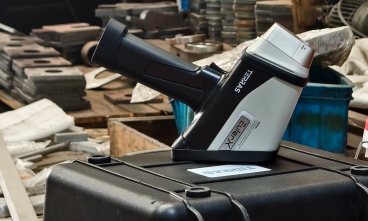
Alloy
A high-tech enterprise focusing on the development and application of X-ray technology products, committed to becoming a leading supplier of X-ray industrial testing solutions.
Innovative Applications of XRF Portable Analyzers in the Recycling Industry
The recycling industry plays a pivotal role in global sustainability, offering solutions to reduce waste, conserve resources, and minimize environmental impact. One of the most exciting advancements in recycling technology is the use of X-ray fluorescence (XRF) portable analyzers. These devices are revolutionizing how materials are processed and sorted, ensuring that valuable resources are recovered with greater efficiency, accuracy, and speed.
What is XRF Technology?
X-ray fluorescence (XRF) is a non-destructive analytical technique used to determine the elemental composition of materials. XRF portable analyzers use X-rays to interact with the atoms in a sample, causing them to emit secondary X-rays. These emitted X-rays are characteristic of the elements in the sample, allowing for the precise identification of elements and their concentrations. The portability of modern XRF analyzers means they can be used directly on-site, reducing the need for complex laboratory analysis.

The Role of XRF in the Recycling Industry
In the recycling industry, where speed, accuracy, and cost-efficiency are critical, XRF portable analyzers offer significant advantages. Here’s how these devices are being applied in various sectors of recycling:
1. Metals Recycling
Metals are among the most valuable materials in recycling, with precious metals like gold, silver, and platinum often found in electronic waste, and base metals like copper and aluminum present in scrap. Traditional methods of sorting and analyzing metals often involve time-consuming, labor-intensive processes. However, XRF portable analyzers can quickly and accurately identify the composition of metals, making it easier to sort scrap metal into different categories. This ensures that recyclable metals are recovered more efficiently, improving the overall profitability of recycling operations.
For example, in the e-waste recycling industry, XRF analyzers are used to detect the presence of precious metals in circuit boards and other components, allowing recyclers to extract valuable materials while minimizing waste.
2. Plastics Recycling
Plastics recycling can be tricky, as plastics are often mixed with additives, fillers, or coatings that affect their properties. XRF portable analyzers can be used to identify the chemical composition of plastic waste, helping recyclers classify plastics by resin type and detect any contaminants or additives. This allows for more accurate recycling and higher-quality plastic products to be produced from recycled materials.
In addition, XRF analyzers can aid in the sorting of multilayer plastics commonly found in food packaging, where different materials need to be separated before recycling. By identifying each layer's composition, recyclers can sort and process them more efficiently.
3. Battery Recycling
The recycling of batteries, especially lithium-ion and other rechargeable types, is a growing concern as demand for electric vehicles and renewable energy storage increases. These batteries contain hazardous materials, such as cadmium, lead, and mercury, which need to be handled with care. XRF portable analyzers are invaluable in this process, as they can quickly detect the presence of these toxic substances, ensuring proper sorting and disposal.
Furthermore, XRF analyzers help identify high-value metals such as cobalt, nickel, and lithium, which are critical for battery production and can be recovered during recycling. This is essential for the sustainable supply of raw materials needed for future battery production.
4. Construction and Demolition Waste
In the construction and demolition (C&D) sector, XRF portable analyzers are increasingly being used to assess and sort materials like concrete, bricks, metals, and glass. Many of these materials contain hazardous substances, such as lead, asbestos, and cadmium, which need to be detected before they can be safely processed. XRF analyzers can quickly identify these hazardous elements, enabling safe disposal and preventing contamination of recyclable materials.
Additionally, XRF can be used to assess the quality of recycled aggregates, ensuring they meet industry standards for reuse in construction projects.
5. Mining and Resource Recovery
In the broader context of resource recovery, XRF portable analyzers are also being used to analyze tailings from mining operations. These tailings often contain valuable metals and minerals that can be extracted through secondary processing. By using XRF to quickly assess the composition of tailings, mining companies can identify areas rich in valuable elements, leading to more efficient resource recovery and less waste.
Benefits of XRF Portable Analyzers in Recycling
The integration of XRF technology in recycling processes offers several key benefits:
Accuracy and Speed: XRF analyzers provide immediate results, eliminating the need for time-consuming laboratory testing. This leads to faster decision-making and more efficient operations.
Non-Destructive Testing: XRF technology does not require the destruction of materials, preserving valuable resources for reuse.
On-Site Analysis: The portability of XRF analyzers means that recycling professionals can perform tests directly at the recycling facility, reducing transport costs and delays.
Cost-Effectiveness: By improving sorting accuracy and reducing the amount of material that ends up in landfills, XRF technology can increase the profitability of recycling operations.
Environmental Benefits: The ability to recover valuable metals and materials from waste reduces the need for mining and manufacturing new products, leading to a lower environmental footprint.

Terras EulerX900 Handheld Alloy Analyzer
Future Prospects for XRF in Recycling
As the demand for sustainable recycling solutions grows, the role of XRF portable analyzers is expected to expand. Advances in XRF technology will likely lead to even more accurate and efficient sorting, enabling recycling industries to handle a broader range of materials, including more complex composites and hazardous waste.
Additionally, with increasing regulations and public awareness about environmental issues, the demand for effective waste management and resource recovery systems will drive the adoption of XRF technology in more sectors.
The Pi 900E Portable Alloy Analyzer combines accuracy, efficiency, and affordability with advanced XRF technology for fast, reliable elemental analysis. It detects alloys like stainless steel, titanium, and aluminum in seconds, with real-time data display, Wi-Fi connectivity, and compatibility with analysis software. Lightweight and rugged, it’s ideal for scrap yards, factories, and labs, offering instant results from magnesium (Mg) to uranium (U) with minimal training required.
Conclusion
XRF portable analyzers are transforming the recycling industry, enabling more efficient sorting, better material recovery, and a cleaner environment. As the industry continues to evolve, these devices will play an essential role in ensuring that valuable resources are not wasted, and that the benefits of recycling extend to future generations. By embracing the power of XRF technology, recyclers can enhance their operations, reduce costs, and contribute to a more sustainable world.
Join Us
Subscribe to our email list for updates & promotions.



